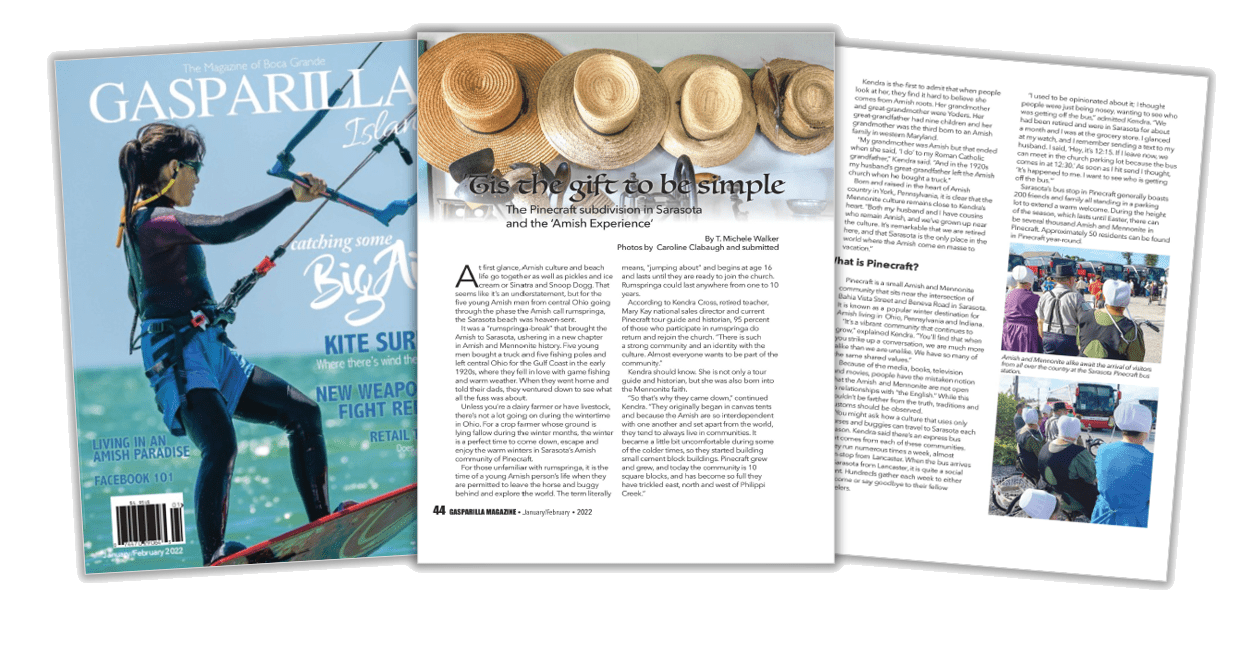Dst’s Kendra Cross in Gasparilla Magazine

’Tis The Gift To Be Simple
The Pinecraft Subdivision in Sarasota and the ‘Amish Experience’
T. Michele Walker | Gasparilla Magazine
January/February 2022
At first glance, Amish culture and beach life go together as well as pickles and ice cream or Sinatra and Snoop Dogg. That seems like it’s an understatement, but for the five young Amish men from central Ohio going through the phase the Amish call rumspringa, the Sarasota beach was heaven-sent.
It was a “rumspringa-break” that brought the Amish to Sarasota, ushering in a new chapter in Amish and Mennonite history. Five young men bought a truck and five fishing poles and left central Ohio for the Gulf Coast in the early 1920s, where they fell in love with game fishing and warm weather. When they went home and told their dads, they ventured down to see what all the fuss was about.
Unless you’re a dairy farmer or have livestock, there’s not a lot going on during the wintertime in Ohio. For a crop farmer whose ground is lying fallow during the winter months, the winter is a perfect time to come down, escape and enjoy the warm winters in Sarasota’s Amish community of Pinecraft.
For those unfamiliar with rumspringa, it is the time of a young Amish person’s life when they are permitted to leave the horse and buggy behind and explore the world. The term literally means, “jumping about” and begins at age 16 and lasts until they are ready to join the church. Rumspringa could last anywhere from one to 10 years.
According to Kendra Cross, retired teacher, Mary Kay national sales director and current Pinecraft tour guide and historian, 95 percent of those who participate in rumspringa do return and rejoin the church. “There is such a strong community and an identity with the culture. Almost everyone wants to be part of the community.”
Kendra should know. She is not only a tour guide and historian, but she was also born into the Mennonite faith.
“So that’s why they came down,” continued Kendra. “They originally began in canvas tents and because the Amish are so interdependent with one another and set apart from the world, they tend to always live in communities. It became a little bit uncomfortable during some of the colder times, so they started building small cement block buildings. Pinecraft grew and grew, and today the community is 10 square blocks, and has become so full they have trickled east, north and west of Philippi Creek.”
